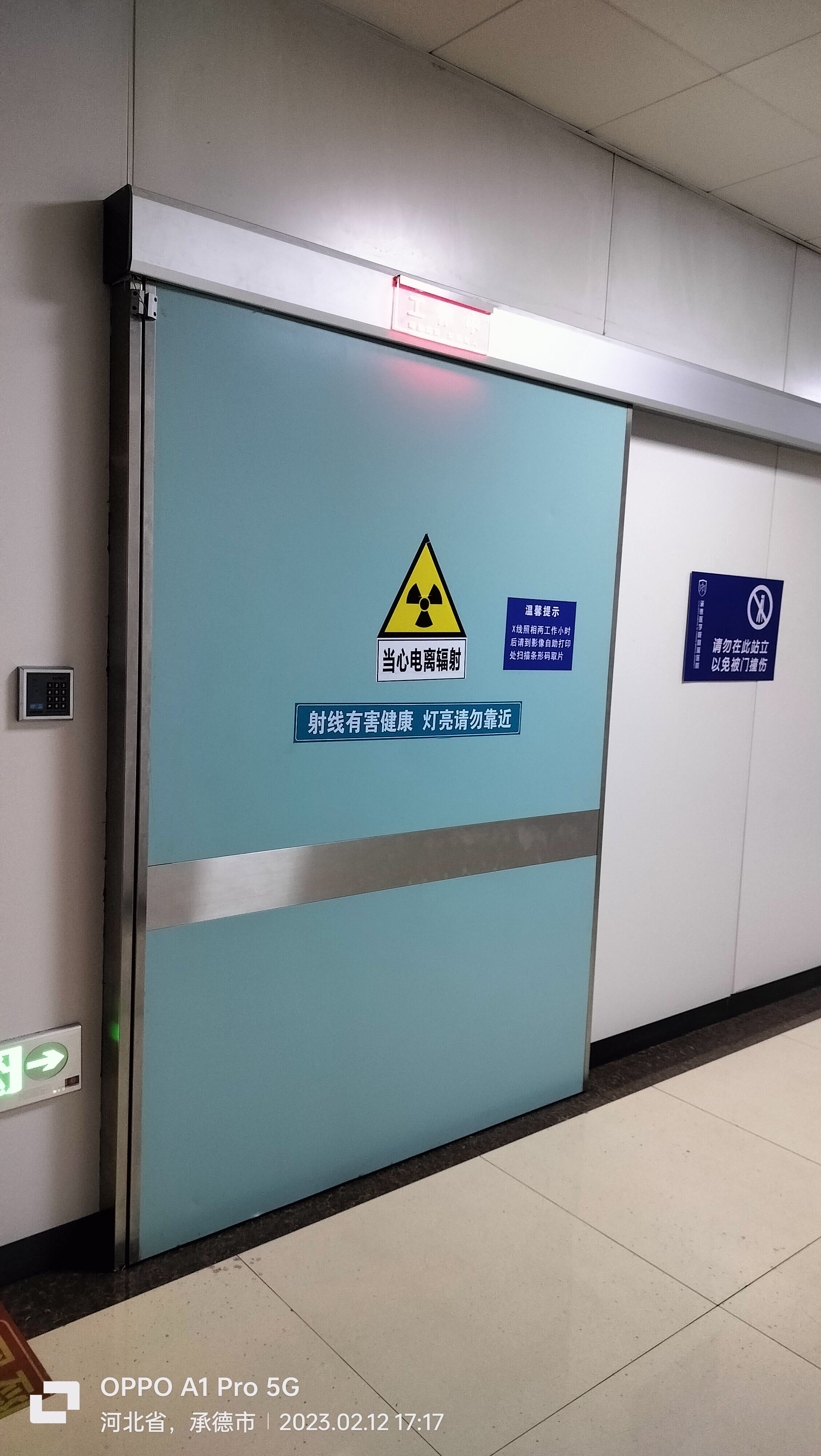How Sustainable a Sustainable Building Can be With Protective Doors
Introduction: Sustainability in Modern Construction
Modern construction is increasingly adopting sustainable practices, with particular attention not only on the energy efficiency of the buildings and the protection of the environment but also on the longevity of the constructions. Nonetheless, architects and builders now prefer to utilize products that not only ensure the safety and security of the property but also contribute to sustainability by providing protection added to the latter. Among many building products that meet the specified conditions, protective doors are the ones that mainly are said to be durable and have excellent comfort characteristics for the users. In this article, the topic is addressed how protective doors are efficient in the use of energy, how the product usage is optimized by constructing the doors in an energy-efficient manner, the produced waste is minimized and a.” new” life-cycle building promotion message. The text that follows will untangle the possible impacts of the products that are energy efficient, waste-reducing, and advocate "life cycle" on the environment.
How Protective Doors Are Able to Secure Sustainability Through Energy Efficiency
The importance of energy efficiency as one of the sustainability factors of buildings is really vital, and the work of protection doors in parallel with it focuses on this aspect. Clearly, with such a situation, our best solution is the use of energy-saving devices known as protective doors, which are easily available and very affordable. The doors mentioned above are protected by the weather, and that is the reason why they do not allow heat and cold to escape, thus keeping the building warm in winter and cool in summer. Such expensive mistakes can actually lead to energy wastage and heavy environmental pollution—the unexpected consequences of such an approach can come instantly calling for new solutions to the problem at hand.
- Doors Insulation for Temperature Control The essence of insulated protective doors is that they regulate extreme temperature which eventually results in the Buildings of a high level of energy efficiency. All barriers of the doors have been made up of some specially engineered insulating material hence they guarantee cleanliness of the environment and thus absorb heat which is the essential attribute of their being an insulator, thus they are helping in the reduction of the temperature to a cooler one. Even in suburban homes, by the simple measure of replacing the exterior entrance with a more energy-efficient one, heat transference to coo....
- Weatherproofing to Minimize Energy Loss Partition doors which are weather resistant facilitate the prevention of the effects of the environmental elements such as rain, wind, and snow that may lead to heat loss and drafts in the building. For commercial buildings, energy-efficient weatherproof doors can be an effective method of temperature regulation by isolating the building from changeable outdoor conditions and, in turn, the cooling to maintain the required temperature indoors is reduced, thus, the HVAC systems do not have to work as much. In addition, Residential buildings even in freezing or hot weather can save significant energy through the door installation as a result of the consistency of the indoor temperature and, therefore, the increment of time contributes to the consistent energy savings.
- Sealing Gaps to Improve Air Quality Defensive doors, more so with weather stripping and insulated cores, are the right tools to use in order to block outside- to inside air infiltration and as a result make spaces comfortable. With protected doors, especially those with weather stripping and core isolation, it is possible to prevent the leakage of air from door frames and hence special treatment air stays inside the building. This action is undoubtedly crucial for the whole energy-saving scenario of a building, alongside good indoor air quality. The doors in question, by avoiding drafts and reducing the requirement for air cooling or heating, not only curb energy use but also serve to create a healthier and more comfortable indoor environment for the occupants of the building.
Durability and Longevity of Protective Doors
It is a big mistake to think that the only thing that could make the construction sustainable is the energy efficiency of it. Durability and sustainability must be taken into account when selecting the construction material; as the longer a product is used, the fewer resources are employed, and hence, waste output is reduced. Protective doors clearly fit in this category of sustainable materials since they are durable enough to withstand wear and tear and still offer quality services. In fact, protective doors even in rain and storm for a long period will not need replacement and thus they will help in saving the resources henceforth. The strength and subsequent life span of these doors ideally place them in both the commercial as well as residential buildings categories of sustainable construction.
- Long-lasting Material In most cases, protective doors are made of long-lasting and high-quality materials like steel, fiberglass, and aluminum. Due to the fact that these materials can endure friction, heat, cold, rain, wind and will still be usable for the life of the doors, they are thus non-perishable. For example, fire-resistant steel doors can endure very high temperatures and remain intact, while fiberglass doors repel water and rot. With the reduced need for upkeep or replacements, the durability of such materials helps minimize waste and save natural resources.
- Minimal Maintenance The first and most important environmental benefit of protective doors is the low level of maintenance they require. You need to take the example of the wooden doors. They need to be painted, sanded and polished on a regular basis to maintain their good appearance while the metal and fiberglass doors are almost maintenance-free. As they are not subject to attacks from pests and are resistant to moisture and extreme weather, they can be still functional without the necessity for continual maintenance. The lower amount of used maintenance materials and labor brought to the premises are the additional impacts on the environment from this choice.
- Recyclable Material Almost all the protective doors, especially those made of steel or aluminum, are recyclable and eco-friendly. These doors can be utilized in a different way after their first-lives expire and the waste of the planet can be reduced in this way. Therefore, by choosing doors that can be recycled, you can set an example by installing such appliances that comply with the principles of the circular economy where products are reduced to, - reused, and recycled again for the new purpose instead of just getting landfilled.
Waste Reduction with Protective Doors
One of the most important things in sustainable construction is the elimination of construction and demolition waste that could lead to a landfill crisis. Protective doors create a minimum of waste in various ways and thus facilitate the development of sustainability.
- Precise Manufacturing and Reduced Waste Present-day manufacturing methods make it possible to cut and produce protective doors in a very precise way, leading to a very low level of material waste during the process of manufacturing. Technological advances have enabled manufacturers to create doors with almost no excess material, which not only reduces waste but also conserves resources effectively. This is especially true for businesses that have large-scale construction projects, which are highly dependent on the efficient production of the doors. Reusability and Repurposing
- Doors made of strong materials that even after the end of their useful life can be reused or repurposed are the best. Steel and aluminum are long-lasting and thus can be utilized again other times. The most typical reusages include melting the door to make new construction materials and using it for other construction applications. By employing these practices, the waste generation of the materials' life circle will be reduced and at the very same time, less demand for raw resources will be made. Long-Lasting Products to Reduce Replacement Frequency
- It is obvious that the design of protective doors suggests that such products are durable and will last a long time. Thus, the kind of situation where replacements happen periodically does not exist at all. Instead of a variety of cheaper and at the same time, less sustainable doors, that need to be replaced every 3 to 5 years, the latter, high-quality protective doors can serve for many years, with a significant decrease in the need for replacements and consequently in waste production. Whatever the case may be, it can be said that for the residential and commercial sectors, acquiring strong and durable doors will definitely contribute to the construction of a more sustainable building via the reduction of the need for continuous construction projects and waste management efforts.
Contribution to Overall Building Sustainability
- Improved Building Performance Protective doors significantly work for the improvement of the overall sustainability of the building by means of eco-friendliness, safety, energy efficiency, and sustainability. The doors support the building in becoming energy efficient by maintaining the indoor temperatures of the building, thus saving the cost of cooling and heating. The door materials, from which steel, fiberglass, and aluminum are used, are solid and sustainable, thus eliminating the maintenance need and expensive replacements. All these factors point to a building's future that is sustainable and low in emission and performs effectively in a variety of areas.
- Support for Green Building Certifications The trend of environmental friendliness in construction has recently increased, as evidenced by the mounting popularity of certifications like LEED (Leadership in Energy and Environmental Design) and BREEAM (Building Research Establishment Environmental Assessment Method). The timely installation of energy-saving, long-lasting, and extremely efficient protective doors can make significant contributions to the realization of the relevant points in these certification systems, eventually leading to the enhancement of environmental sustainability and thus the creation of green buildings.
- Meeting Regulatory Standards The seal of sustainability has significantly influenced the improvement of environmental regulations. This positive influence might even go beyond the mere compliance of the energy efficiency and the life cycle of the sustainability of the building parts. An example of this is the protective doors that help the energy efficiency and the durability of the buildings, thus the urban and rural areas are becoming compliant with the regulation, whether they are high / middle / low, etc.
Conclusion: A Step Toward Sustainable Construction
Protective doors are not only necessary to secure and safeguard a building but they also are indispensable for the implementation of green building principles in contemporary structures. Energy efficiency, waste reduction, and building life extension are the main contributions of those doors to the construction of sustainable structures. Consequently, the number of sustainable building constructions rises, the more the use of protective doors will be an inevitable and central part of the whole process of creating not only green but also resilient, energy-efficient, and durable properties. In order to bring positive change to their buildings and turn them into a green oasis, it is an irreplaceable and inevitable step for one to invest in high-quality protective doors.

